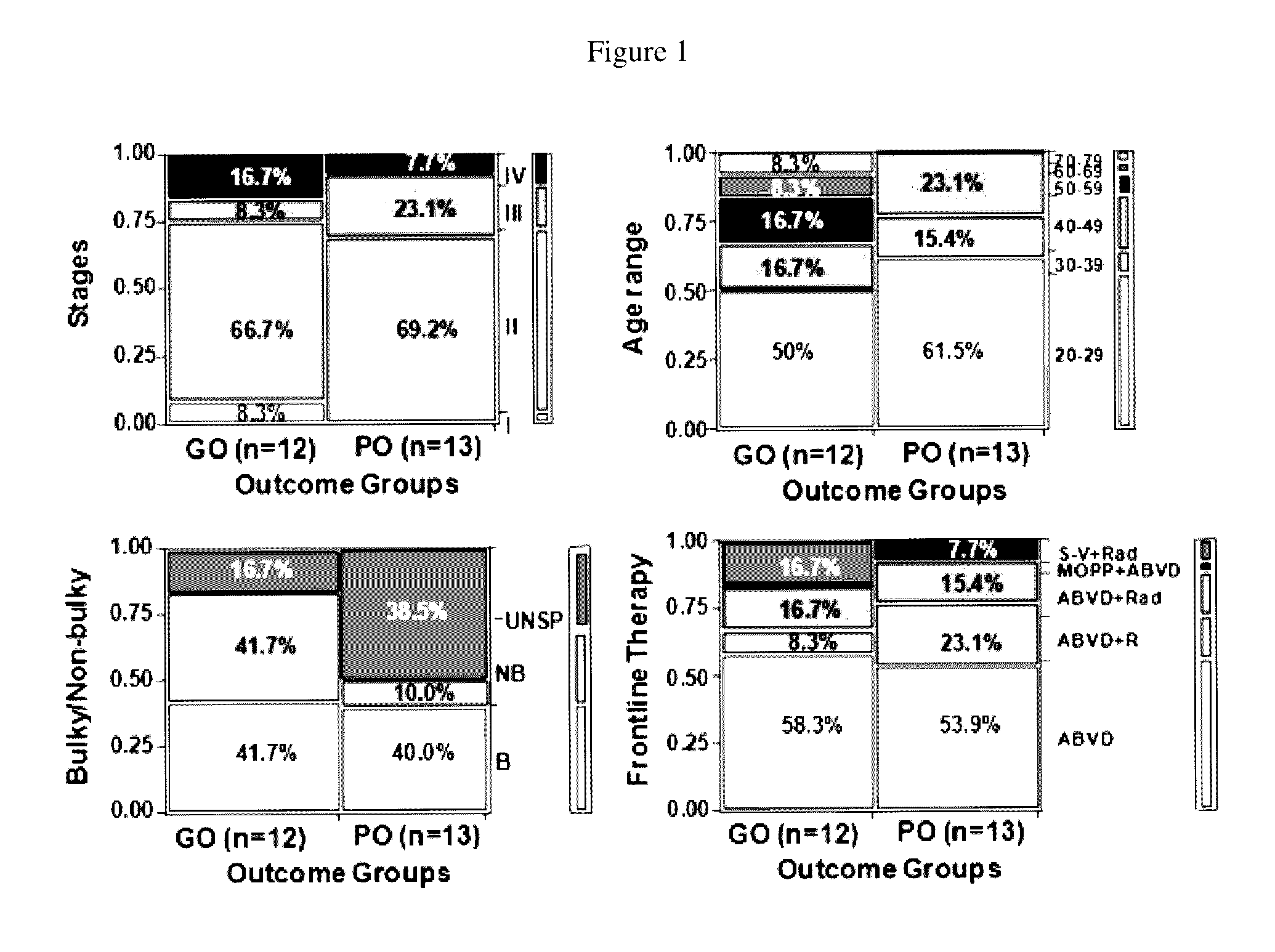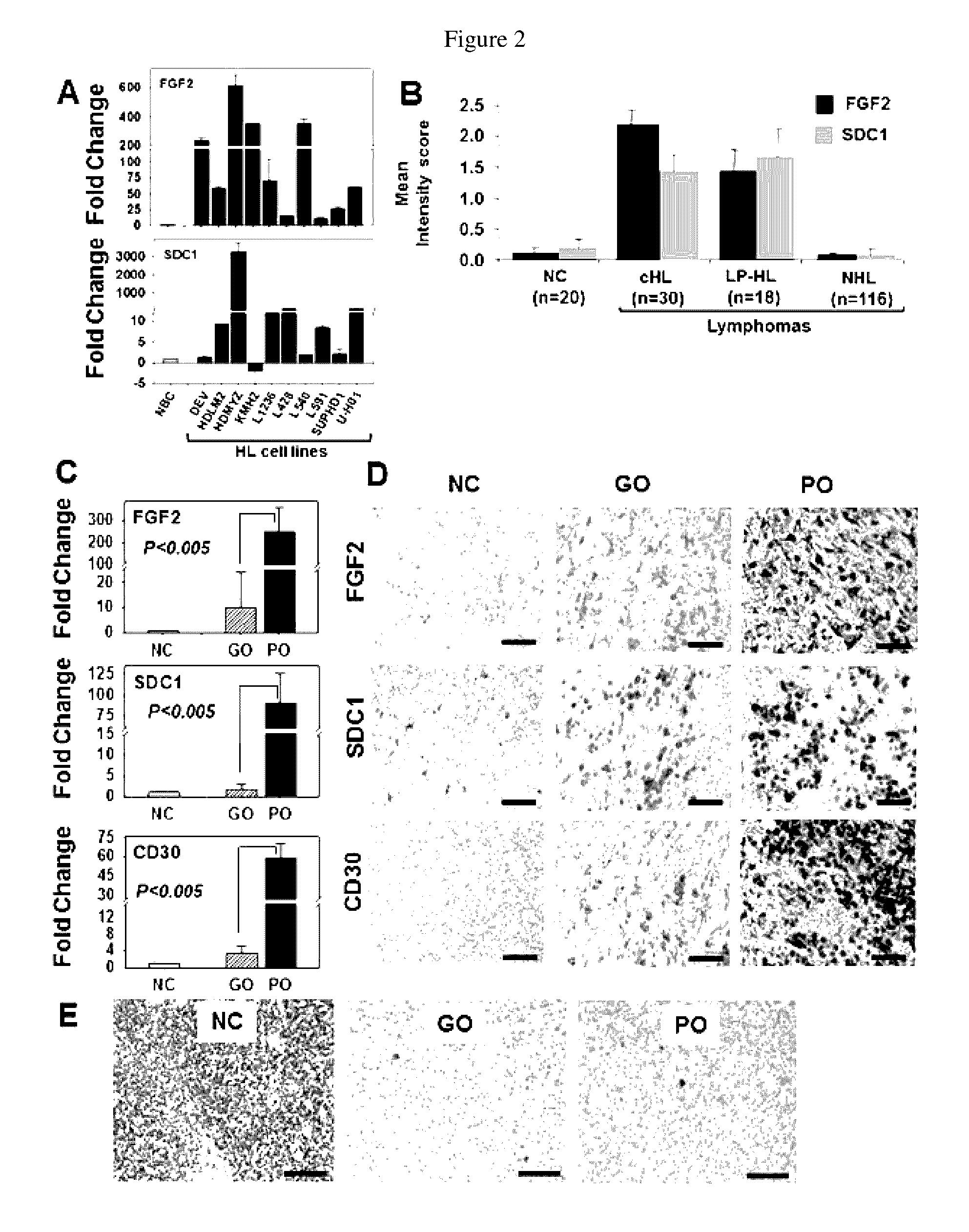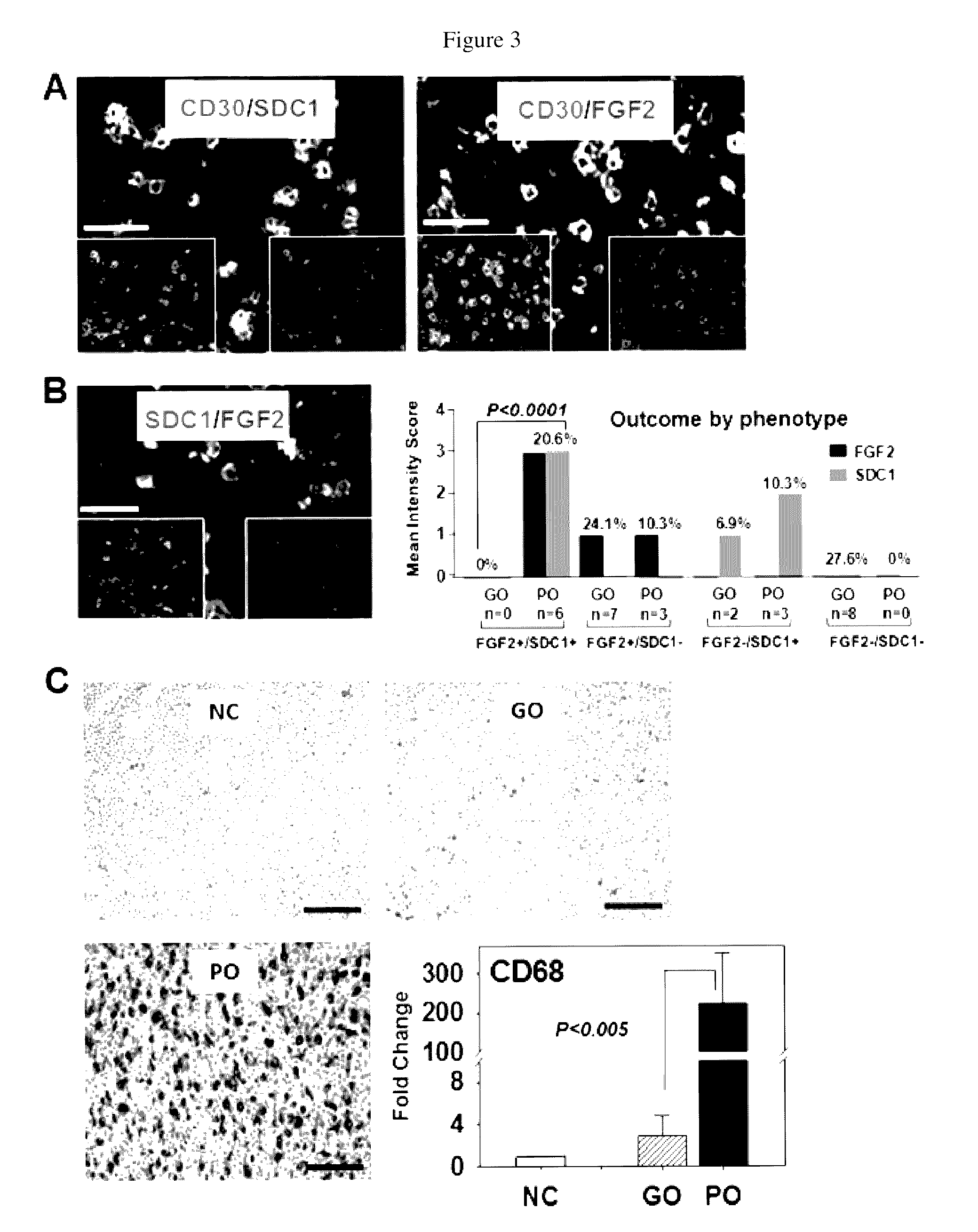Fibroblast growth factor-2 (FGF2) and syndecan-1 (SDC1) as biomarkers for poor outcome Hodgkin lymphoma patients
a technology of fibroblast growth factor and syndecan-1, which is applied in the field of hodgkin lymphoma (h), can solve the problems of unknown hodgkin lymphoma risk, low risk of hodgkin lymphoma, and low detection rate of fgf2 rna, and achieve the effect of increasing the expression level of fgf2 rna
- Summary
- Abstract
- Description
- Claims
- Application Information
AI Technical Summary
Benefits of technology
Problems solved by technology
Method used
Image
Examples
example 1
Characteristics of Clinical Samples
[0170]The characteristics of clinical samples for PBL are listed in Table 8. Retrospective clinical samples of PBL collected from 25 NS-cHL patients (average age: 34.48 years, range: 20-79, 13 females and 12 males) were categorized into three groups on the basis of their response to first line therapy: (1) good outcome pre-therapy: chemo-naïve relapse free / progression-free survival >4 years (GO, n=12); (2) poor outcome pre-therapy: chemo-naïve primary refractory or early relapsing (PO(CN), n=6); and (3) poor outcome post-therapy: chemo-exposed, multiple relapse within 4 years (PO(CE), n=7). Among the pre-therapy, chemo-naïve patients (n=18), 68% were diagnosed during early disease stages (I and II), 10% (n=2) at stage III, and 15% (n=3) at stage IV. Of the early stage diagnoses (I and II, n=13), more than 30% (n=4) were either primary refractory or developed early relapses shortly after frontline therapy. The remaining PO(CN) samples were from adva...
example 2
Bioinformatics and Data Mining for Potential Biomarkers
[0171]To enhance the specificity of potential poor outcome biomarkers, a bioinformatics based approach was used. Bioinformatics-guided approaches have the unique advantage of avoiding challenges that arise from the cost, time, and labor that are required to identify potential biomarkers for human diseases.
[0172]Potential biomarkers for HL were selected from the Cancer Gene Index and screened using a library of HL cell lines. The BioXM software platform (Sophic Alliance, Rockville, Md.) was used to mine published data for more than 7,000 cancer genes and 2,200 biomarker genes. These genes were annotated and validated from 18 million Medline abstracts and 24,000 HUGO genes using a combination of algorithmic methods (Biomax Informatics, Munich, Germany), including natural language processing (NPL), Biomarker Role Codes, the NCI Cancer Thesaurus, and Karp's Evidence Codes (Karp P D et al., Pacif Sympo Biocomp; 2004: 190-201). Compil...
example 3
Clinical Outcome of HL Patients is Not Associated with Tumor Staging, Age, Bulkiness or First-Line Therapy
[0173]In this study, contingency analyses was performed on 25 NS-cHL patients in order to determine whether an association exists between clinical outcome and tumor staging, patient age, bulky disease or first-line therapy. The results of this study are shown in FIG. 1. Contingency analyses of 25 NS-cHL patients did not identify associations between clinical outcomes (good outcome (GO), n=12, vs. poor outcome (PO), n=13) and major clinical characteristics such as clinical stage (p>0.4), age group (p>0.11), bulky disease (with or without inclusion of unspecified data, p>0.18), and frontline therapy (p>0.27) (FIG. 1, Table 8). The same analysis of the dataset with the PO (CE) group excluded also failed to identify any relationship between outcome and clinical phenotype. This result differs from established trends used in stratification schemes of current prognostic scoring systems...
PUM
| Property | Measurement | Unit |
|---|---|---|
| temperature | aaaaa | aaaaa |
| volume | aaaaa | aaaaa |
| volume | aaaaa | aaaaa |
Abstract
Description
Claims
Application Information
 Login to View More
Login to View More - R&D
- Intellectual Property
- Life Sciences
- Materials
- Tech Scout
- Unparalleled Data Quality
- Higher Quality Content
- 60% Fewer Hallucinations
Browse by: Latest US Patents, China's latest patents, Technical Efficacy Thesaurus, Application Domain, Technology Topic, Popular Technical Reports.
© 2025 PatSnap. All rights reserved.Legal|Privacy policy|Modern Slavery Act Transparency Statement|Sitemap|About US| Contact US: help@patsnap.com



